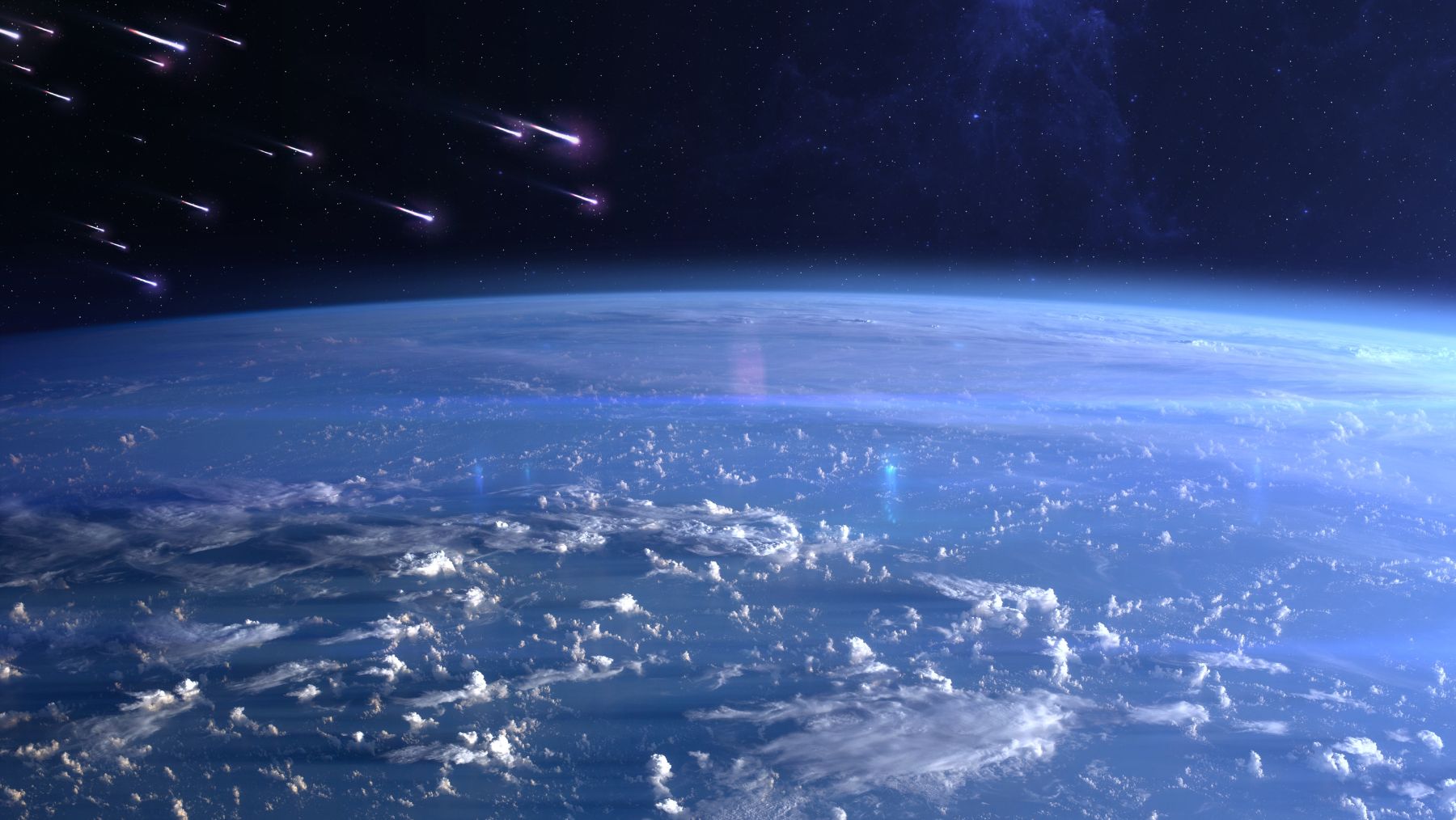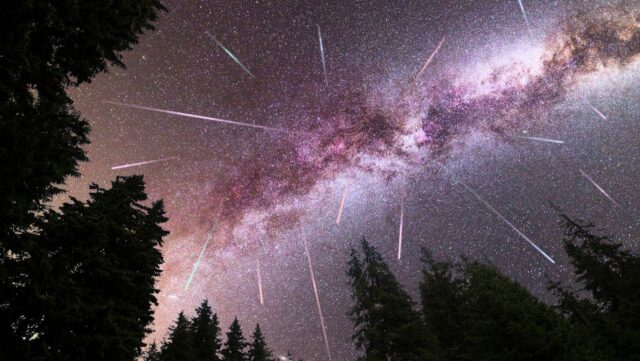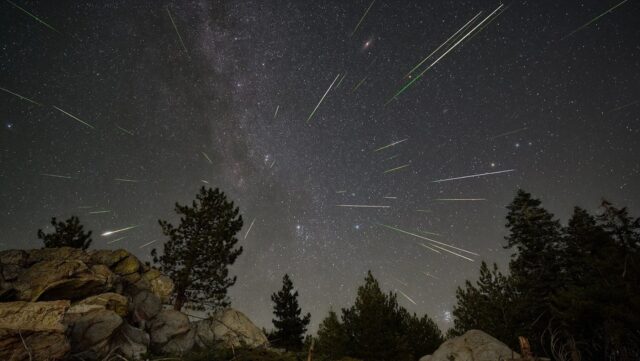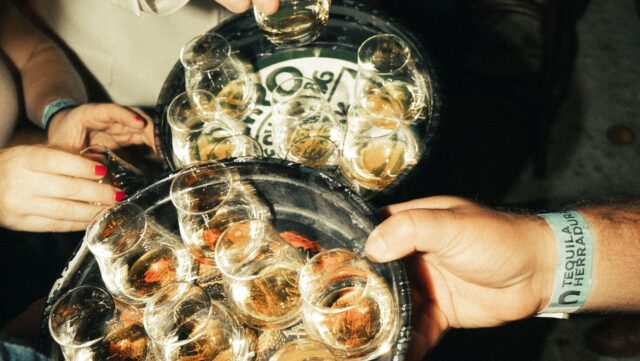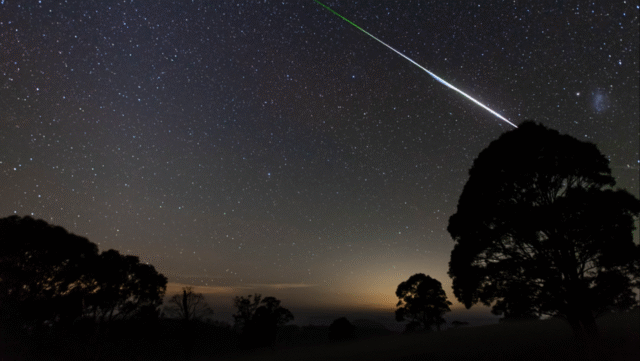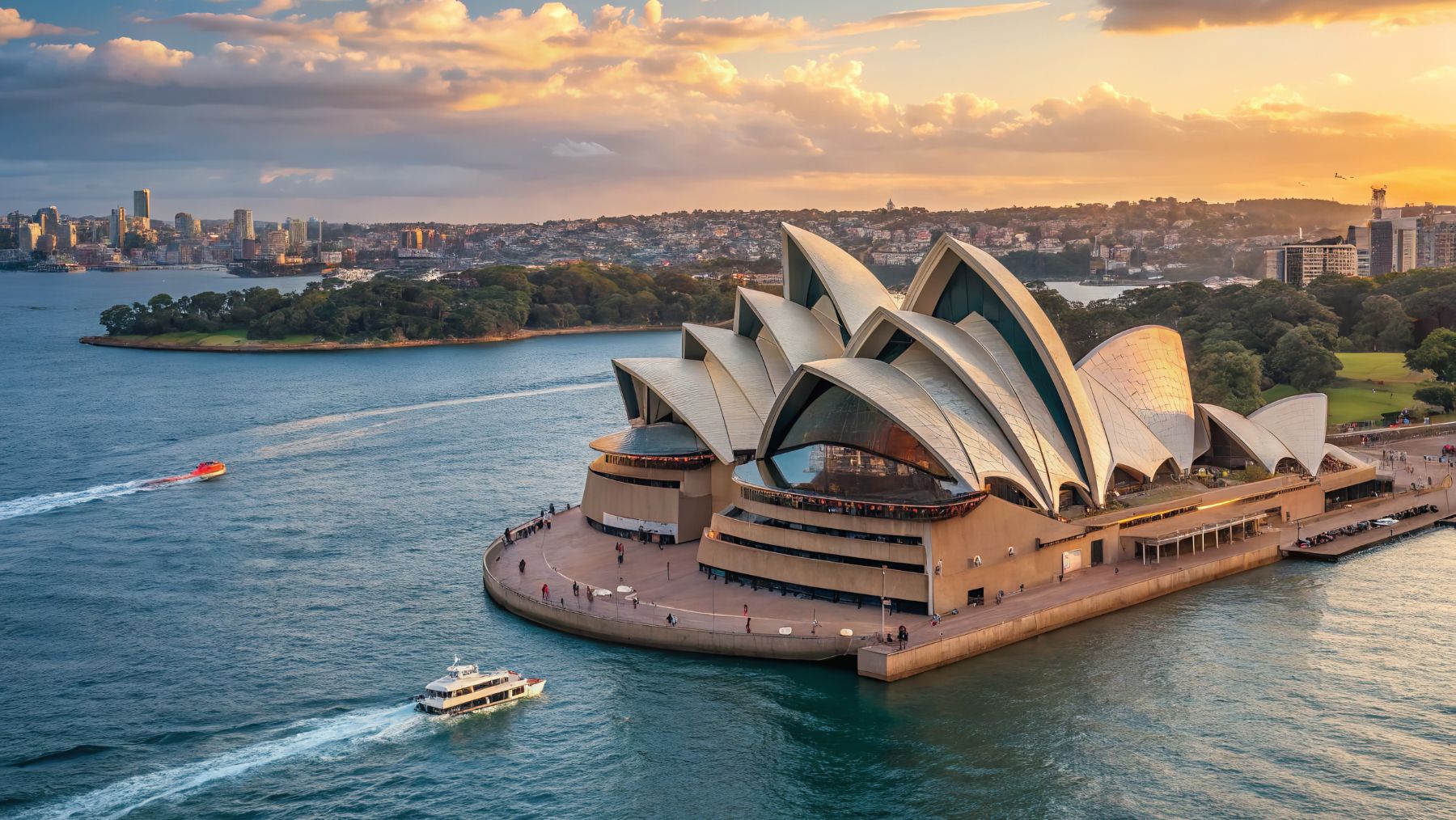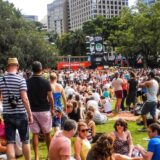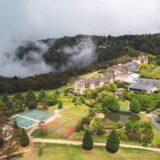- Up to 20 meteors per hour: the Eta Aquarids meteor shower will peak this week.
- The Southern Hemisphere has the best chance of seeing it, with Aussies having prime opportunity to view the celestial event.
- Set those alarms as it’s expected to reach its peak at 2am AEST on both May 6 and May 7.
It’s not long since the Lyrid meteor shower was lighting up the skies, but this week, the Eta Aquarids will be putting on a show. The meteor shower, formed from debris from Halley’s Comet, shows up every year. As Halley’s Comet makes its way through the Solar System, a trail of dust, gas and other debris is left behind in its wake, crossing Earth’s orbit twice a year.
The Eta Aquarii (Aquarius) star constellation appears in the background, with the meteors passing in the foreground. The show gets under way tonight but will peak later this week. Read on to find out the best times and places to see the passing meteors.
READ MORE: Top things to do in Sydney this week (May 5-11).
When can I see the Eta Aquariids?
Weather permitting (though the forecast looks decidedly better than last week, fingers crossed), Sydneysiders can expect to see the most impressive meteor shower before dawn on Thursday, May 8. A few days either side of the peak could still be impressive, with 12 meteors per hour predicted for Monday, 15 per hour on Tuesday and 17 per hour on Wednesday. But Thursday morning is the peak with up to 20 meteors predicted to pass Sydney per hour.
The best time to see the meteors is in the early morning, before sunrise. That’s when the Aquarius constellation, where the meteors appear to come from, will be highest in the sky. Dr Laura Driessen, an astronomer at the University of Sydney, recommends heading out between 3am and 5am local time.
The moon will have set by 3am, so the sky will be particularly dark, allowing you to see the meteors better.
READ MORE: Best land-based places to spot whales in Sydney.
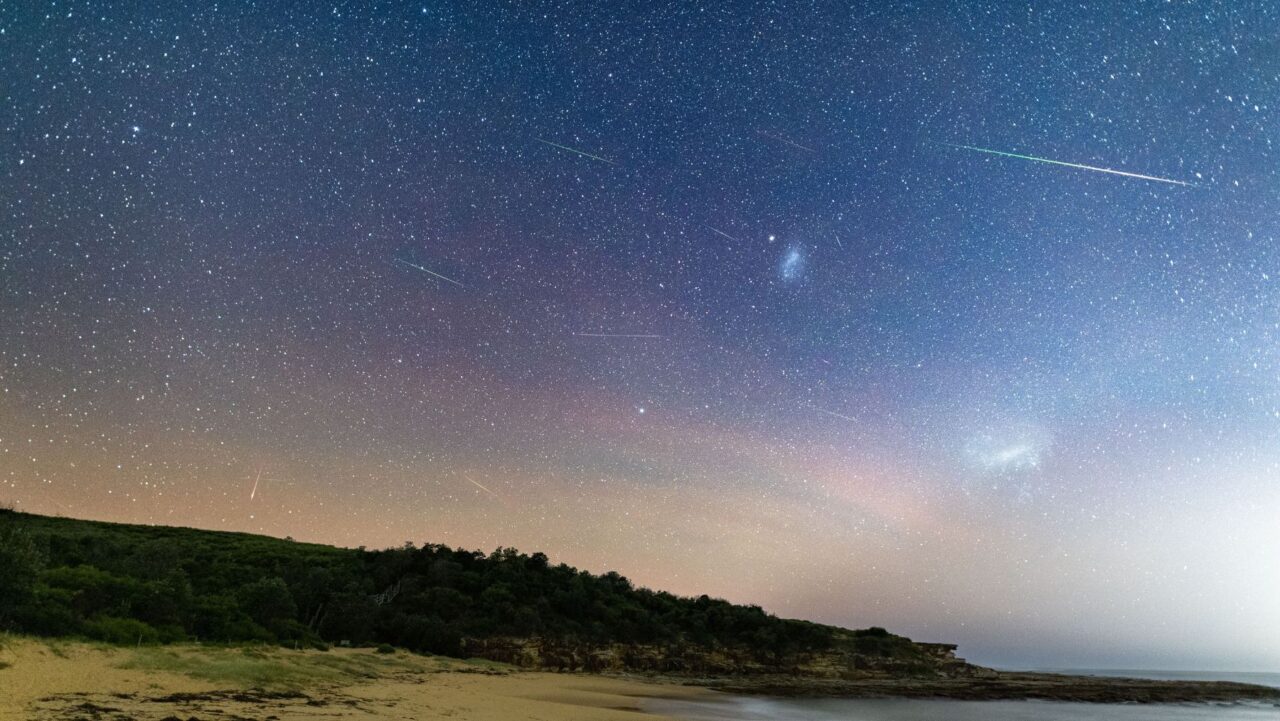
Where are the best places to watch the meteor shower in Sydney?
As with all celestial events, the main piece of advice to get a good view of the stars is get as far away from as much artificial lighting as possible. The more lights that are visible, the less likely you’ll be able to see the shooting stars in the sky above.
Patience is also key. It can take around 30 minutes for our eyes to properly adjust to the darkness—that’s half an hour of avoiding the blue light emanating from your phone too! Put all screens down and enjoy a 30-minute digital detox while you wait for the meteors to materialise.
Your view of the stars is heavily dependent on cloud cover. There’s not much you can do about the clouds, but you can download the Sky Map app to monitor conditions so you don’t head out for disappointment. It can also help you choose the best location for the meteor show.
As for locations, the Blue Mountains is generally best. Amateur astronomers love to head out to Springwood Lookout, and you can also head down to Martin’s Lookout, at the end of Farm Road. If you want to stick closer to the city, Sydney Observatory in The Rocks is where most of Sydney’s sky nerds will flock to, while looking out across the ocean at Bondi Beach may prove a success—or you could take your chances at Badu Mangroves Bird Refuge, one of Sydney’s best-kept secrets just a short drive from Rhodes. Generally speaking, anywhere with minimal lighting is your best bet.

